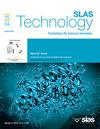评价化学诱导的小胶质细胞活化的高通量细胞因子检测平台。
IF 3.7
4区 医学
Q3 BIOCHEMICAL RESEARCH METHODS
引用次数: 0
摘要
环境中的化学物质暴露,如杀虫剂和重金属,可能通过神经炎症导致神经退行性疾病。本研究旨在确定合适的体外小胶质细胞模型,以评估细胞因子对潜在神经毒物的反应,特别是关注人诱导多能干细胞来源的小胶质细胞(hiMG)。在这项研究中,我们使用细胞因子阵列评估了四种小胶质细胞类型(himg, HMC3, IM-HM和bv2)在脂多糖(LPS)刺激下的细胞因子分泌谱。我们的研究结果显示,细胞因子在hiMG细胞中的反应模式与体内条件最相似,白细胞介素6 (IL-6)和肿瘤坏死因子α (TNF-α)水平显著升高,后者在LPS处理后唯一表达。因此,我们开发了1536孔板格式的均匀时间分辨荧光(htf)检测平台,用于使用hiMG细胞进行高通量筛选环境化学物质。LPS处理后,IL-6和TNF-α分泌的测定窗口分别比对照增加了3.71倍和2.62倍,IL-6和TNF-α的EC50值分别约为50 ng/mL和90 ng/mL。我们还评估了hiMG对其他刺激的反应活性,包括干扰素γ和各种儿茶酚胺化合物,以及在其他体外实验中具有细胞因子诱导潜力的九种环境化学物质。虽然所有九种被测试的药物都能刺激IL-6和TNF-α的产生,但三种化合物(如皮氧嘧啶)对这两种细胞因子都有显著的刺激作用。本研究建立了一个可靠的高通量平台,用于在小胶质细胞试验中检测环境毒物的炎症效应,为其神经炎症潜力和神经退行性疾病的可能含义提供了有价值的见解。本文章由计算机程序翻译,如有差异,请以英文原文为准。
High-throughput cytokine detection platform for evaluation of chemical induced microglial activation
Environmental chemical exposure, such as pesticides and heavy metals, may contribute to neurodegenerative disorders through neuroinflammation. This study aims to identify suitable in vitro microglial models for assessing cytokine responses to potential neurotoxicants, particularly focusing on human induced pluripotent stem cell-derived microglia (hiMG). In this study, we evaluated the cytokine secretion profiles of four microglial cell types—hiMG, HMC3, IM-HM, and BV2—upon stimulation with lipopolysaccharides (LPS) using cytokine arrays. Our findings showed cytokine response patterns in hiMG cells that most closely resemble in vivo conditions, with significant increases in interleukin 6 (IL-6) and tumor necrosis factor-alpha (TNF-α) levels, the latter being uniquely expressed after LPS treatment. Consequently, we developed a homogeneous time-resolved fluorescence (HTRF) assay platform in a 1536-well plate format for high-throughput screening of environmental chemicals using hiMG cells. After LPS treatment, the assay window for secretion of IL-6 and TNF-α increased 3.71-fold and 2.62-fold over the vehicle control group, respectively, with respective EC50 values of approximately 50 ng/mL and 90 ng/mL for IL-6 and TNF-α. We also assessed the response activity of hiMG to other stimuli, including interferon gamma and various catecholamine compounds, and nine environmental chemicals with evidence of cytokine-inducing potential in other in vitro assays. While all nine tested agents stimulated IL-6 and TNF-α production, three compounds (e.g., picoxystrobin) showed significant stimulation of both cytokines. This study establishes a reliable high-throughput platform for detecting inflammatory effects of environmental toxicants in a microglial cell assay, contributing valuable insights into their neuroinflammatory potential and possible implications for neurodegenerative disorders.
求助全文
通过发布文献求助,成功后即可免费获取论文全文。
去求助
来源期刊

SLAS Technology
Computer Science-Computer Science Applications
CiteScore
6.30
自引率
7.40%
发文量
47
审稿时长
106 days
期刊介绍:
SLAS Technology emphasizes scientific and technical advances that enable and improve life sciences research and development; drug-delivery; diagnostics; biomedical and molecular imaging; and personalized and precision medicine. This includes high-throughput and other laboratory automation technologies; micro/nanotechnologies; analytical, separation and quantitative techniques; synthetic chemistry and biology; informatics (data analysis, statistics, bio, genomic and chemoinformatics); and more.
 求助内容:
求助内容: 应助结果提醒方式:
应助结果提醒方式:


